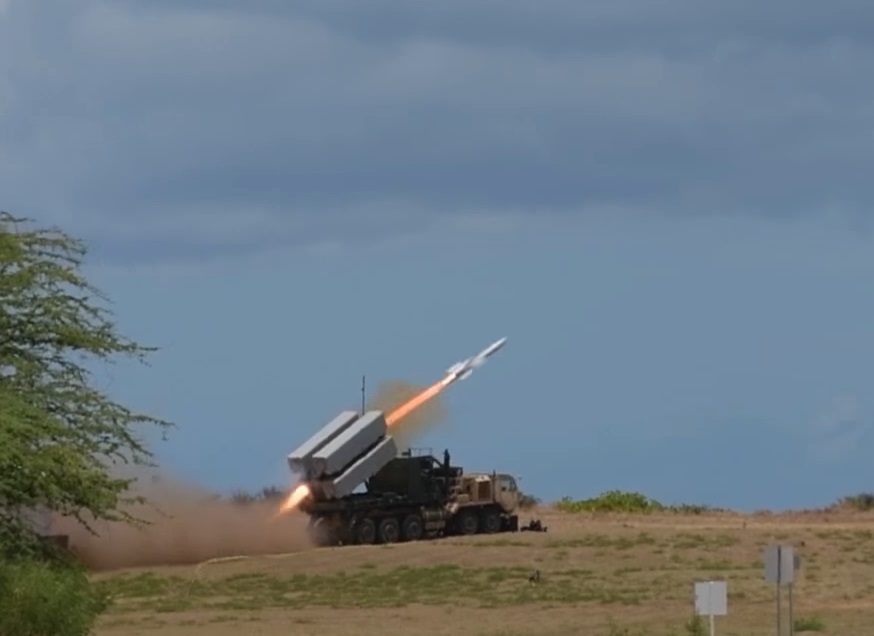
On July 12, the U.S. Army successfully launched the Kongsberg’s Naval Strike Missile (NSM) from new mobile coastal defense system and struck the USS Racine (LST-1191) Newport-class tank landing ship target at Pacific Missile Range Facility Barking Sands Hawaii, during a Rim of the Pacific (RIMPAC) exercise sinking exercise.
The U.S. Army has, for the first time, tested new mobile coastal defense system with fired a fifth-generation anti-ship missile at a target ship in an effort to create a force that can overwhelm an enemy with attacks from multiple sources.
“I will tell you, you’re seeing the future,” Gen. Robert Brown, commander of U.S. Army Pacific said Thursday after the missile launched from the shoreline of Hawaii’s Kauai Island.
The new mobile coastal defense system with NSM surface-to-ship missiles is designed for high precision strike missions against high threat targets or highly defended targets at sea or on land up to 200 km and above.
Norwegian weapons manufacturer Kongsberg and U.S. company Raytheon jointly developed the new version of the missile on the HEMTT vehicle bases in early 2015. Companies entered into a teaming agreement in 2016 and Raytheon received an initial contract to produce Naval Strike Missile (NSM) launchers at its production facility in Tucson, Arizona in August 2016.
According to the Raytheon, the Naval Strike Missile is a fifth-generation long-range, precision strike weapon that can find and destroy enemy ships at distances up to 200 km away. The stealthy missile flies at sea-skimming altitude, has terrain-following capability and uses an advanced seeker for precise targeting in challenging conditions.
Earlier, the overall appearance and characteristics of the new missile system were not disclosed.
The world’s largest international maritime exercise, RIMPAC provides a unique training opportunity while fostering and sustaining cooperative relationships among participants critical to ensuring the safety of sea lanes and security of the world’s oceans. RIMPAC 2018 is the 26th exercise in the series that began in 1971.
This was the first time U.S. Army ground forces have participated in a sinking exercise during RIMPAC.
This year’s exercise includes forces from Australia, Brazil, Brunei, Canada, Chile, Colombia, France, Germany, India, Indonesia, Israel, Japan, Malaysia, Mexico, Netherlands, New Zealand, Peru, the Republic of Korea, the Republic of the Philippines, Singapore, Sri Lanka, Thailand, Tonga, the United Kingdom, the United States, and Vietnam.